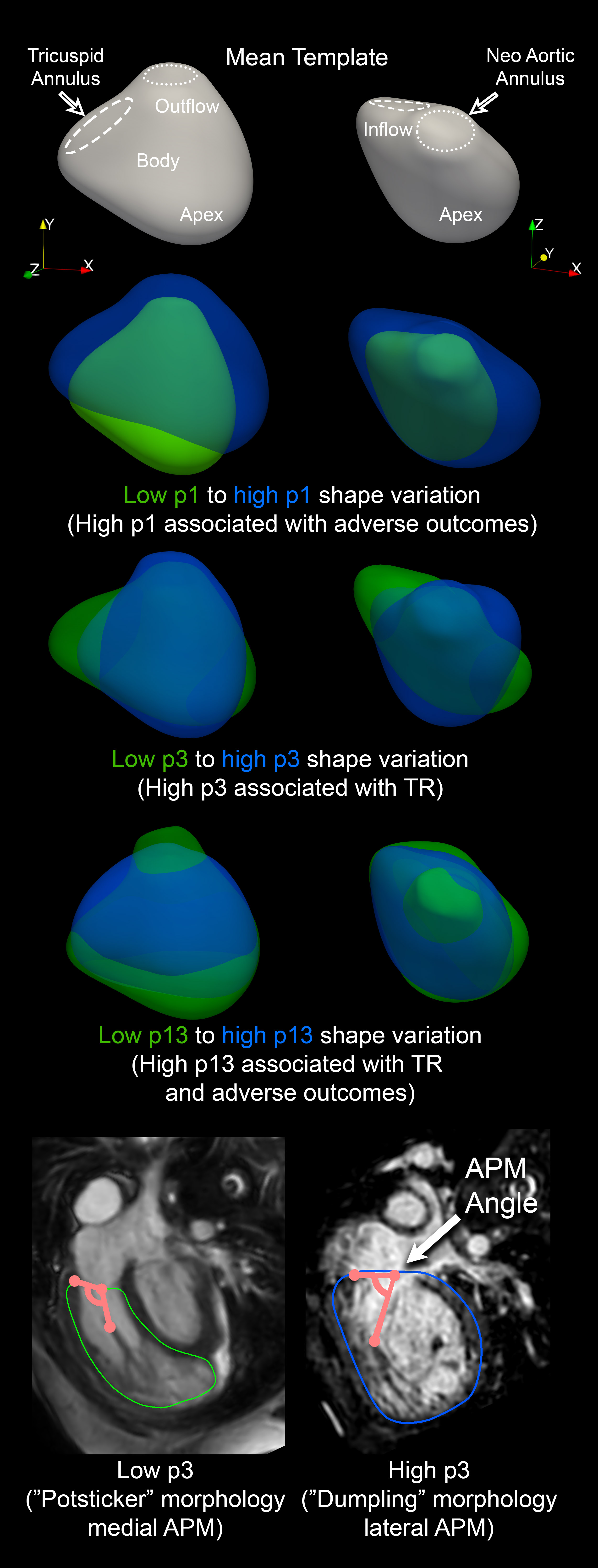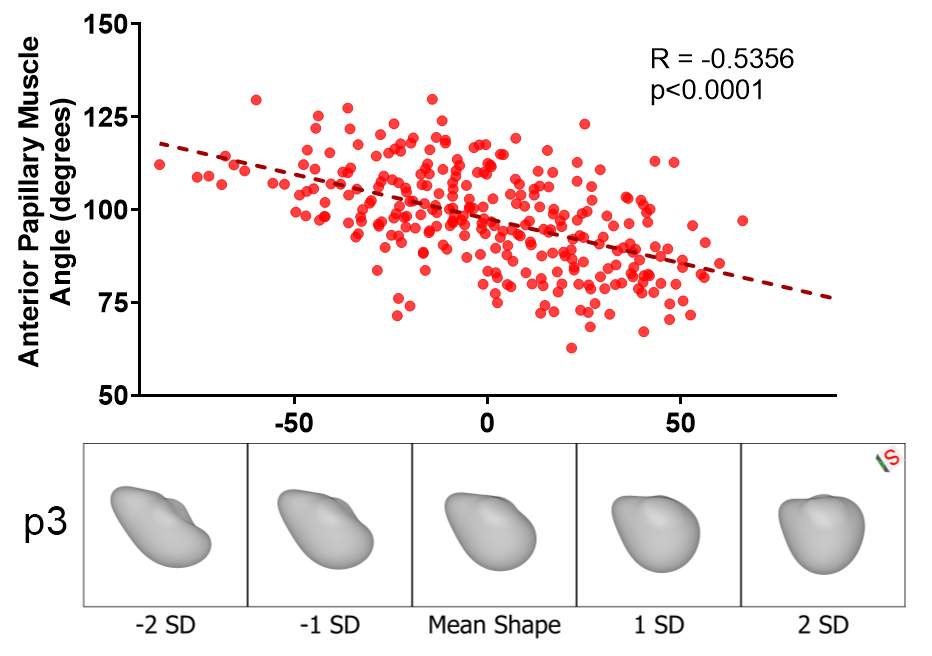Rapid Fire Abstracts
Tricuspid Regurgitation and Associated Shape Variations of Right Ventricular 3D Geometry in Hypoplastic Left Heart Syndrome Patients: A Fontan Outcomes Registry using CMR Examination (FORCE) Study (RF_FR_415)

Yue-Hin Loke, MD
Associate Professor
Children's National Medical Center
Yue-Hin Loke, MD
Associate Professor
Children's National Medical Center- RO
Ryan P. O'Hara, PhD
Postdoc
Children's National Hospital - JC
Jacqueline Contento, BSc
Engineer
Children's National Medical Center - NM
Nicole Marella, MD
Assistant Professor
Rutgers Health - SK
Sarah E. Kollar, DO
Advanced Imaging Cardiologist
Children's National Hospital - RV
Ravi Vamsee Vegulla, MD
Assistant Professor of Pediatrics
Children's National Medical Center - SG
Susana Gaviria, MD
Pediatric Resident
MedStar Georgetown - EB
Elias Balaras, PhD
Professor
George Washington University - Yd
Yves d'Udekem, MD, PhD
Professor
Children's National Medical Center 
Tarek Alsaied, MD
Assistant Professor of Pediatrics
Children's Hospital of Pittsburgh.png)
Laura Olivieri, MD
Associate Professor of Pediatrics
Children's Hospital of Pittsburgh of UPMC
Rahul H. Rathod, MD, MBA
Associate Chair of Cardiology
Boston Children's Hospital.jpg)
Uyen Truong, MD
Associate Professor
Children's National Hospital- FC
Francesco Capuano, PhD
Assistant Professor
Universitat Politecnica deCatalunya Barcelona Tech, Spain
Presenting Author(s)
Primary Author(s)
Co-Author(s)
Right ventricular (RV) function is critical to the long-term health of patients with hypoplastic left heart syndrome (HLHS), and development of significant tricuspid regurgitation (TR) is associated with adverse outcomes. However, most studies investigating TR in HLHS are based on echocardiographic measurements and do not consider RV shape characteristics that impact tricuspid valve (TV) function. In this study, we analyzed TR in a large multi-center cohort of HLHS patients and the associations with ventricular shape and clinical outcomes using statistical shape modeling (SSM).
Methods:
Three hundred and twenty-eight studies from unique HLHS patients in the Fontan Outcomes Registry using CMR Examinations (FORCE) were post-processed by a core lab at one institution, including volumetry, 2D measurements, strain analysis and phase-contrast measurements. TR was measured by direct inflow phase-contrast or by comparing neo-aortic forward flow with RV stroke volume; ≥moderate TR was defined as regurgitant fraction ≥25%. The TV annulus was measured for septolateral (TVSL) anterior-posterior (TVAP) diameters (indexed to BSA0.5) and the anterior papillary muscle (APM) angle. 3D end-diastolic models of RV were reconstructed using Mimics (Materialise). SSM was performed via Shapeworks Studio (NIH/NIGMS CIBC) to derive the mean shape template and quantify shape variations (shape modes) representing differences from the mean. Relationships between RV shape, TR and composite adverse outcomes (mortality/transplant, heart failure, plastic bronchitis, protein losing enteropathy) were assessed using bivariable regression analyses and Pearson correlation coefficient.
Results:
Fifty-seven patients (17%; 14.6±7.4 years, 36% female) had ≥moderate TR with no differences in age/sex compared to < moderate TR (14.5±6.1 years, 37% female). The mean template from all 328 patients resembled a circumferentially dilated RV with loss of concavity in septal wall (Fig 1). SSM captured 99% of the total shape variance in the first 23 modes. The shape mode, p1, representing 11% of the variance was characterized by an “apical bulge” variant. Shape modes p3 and p13, representing 5.5% of variance was characterized by a transition from a “pot-sticker” crescent-shaped RV body into a “dumpling” spherical-shaped RV body. p3, p13 and larger TVSL/TVAP was associated with ≥moderate TR (Table). p3 directly correlated with TVSL/TVAP (R=0.279, p< 0.0001; R=0.321, p< 0.0001 respectively) and lateral displacement of APM (Fig 2). p1/p13 shape variants, ≥moderate TR, RV size/mass and global circumferential strain was associated with composite adverse outcomes on bivariable analysis (Table).
Conclusion:
SSM can characterize the interplay between ventricular shape and TV anatomy contributing to TR in HLHS patients. The “dumpling” RV morphology with larger TV annulus and lateral displacement of APM potentially sets up the anatomical substrate for TV leaflet prolapse observed in echocardiographic studies. SSM may provide patient-specific metrics to define TV pathology and predict adverse outcomes for HLHS patients.
Mean Shape Template of the systemic right ventricle in hypoplastic left heart syndrome and several shape variants (p1, p3, p13) are demonstrated. Representative cardiac magnetic resonance imaging for p3 shape variation is also shown. 
Correlation coefficient analysis between p3 shape mode and anterior papillary muscle (APM) angle. Low p3 scores (“potsticker” morphology) is associated with medially displaced (wide angle) APM, whereas high p3 scores (“dumpling” morphology) is associated with laterally displaced APM which could result in prolapse of the tricuspid valve leaflets. 

